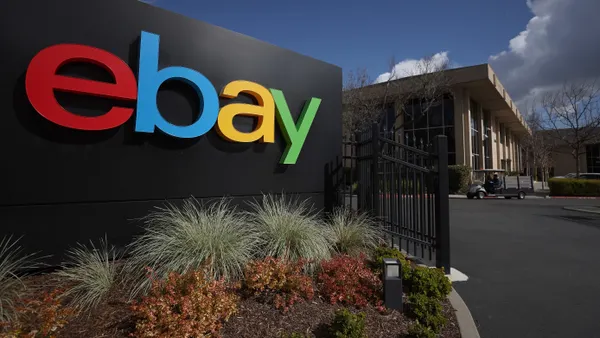Dive Brief:
- Best Buy’s third-quarter revenue fell 3.2% to $9.4 billion, from $9.8 billion a year ago, the company said in a Tuesday press release. CEO Corie Barry said the retailer struggled from weak customer demand ahead of the election and shoppers were waiting for deals.
- Comparable sales declined 2.9%, as did operating income, which fell 1.1% to $350 million. However, net earnings rose 3.8% from $263 million to $273 million.
- Best Buy lowered its full-year guidance. It now expects revenue to range from $41.1 billion to $41.5 billion with a comp sales decline of 3.5% to 2.5%. Prior guidance was for revenue of $41.3 billion to $41.9 billion with a comp sales decline of 3% to 1.5%.
Dive Insight:
Best Buy’s financial performance has been soft through the first nine months of the year. The retailer’s revenue fell 6.5% in Q1 and declined 3% during Q2. First-quarter comps were also down 6.1% and down 2.3% for the second quarter.
Barry said during an earnings call that the third quarter got off to a softer start than expected. She attributed that to weaker customer demand, particularly in September and October, that was driven by ongoing macroeconomic uncertainty. Drilling down, Barry said customers were willing to wait for deals and were also likely distracted in the run up to the presidential election. But with the election over and holiday sales front and center just three days ahead of Black Friday, Barry said customer demand is on the upswing again.
During Q3, Best Buy saw comparable sales growth in computing, tablets and services. However, that growth was offset by declines in appliances, home theater and gaming. Domestic online revenue for Q3 was $2.73 billion, a 1% decline on a comparable basis. Online revenue was 31.4% of total domestic revenue for the quarter, up from 30.6% a year ago.
“A total sales dip of 3.1% isn’t terrible, but it comes off the back of a sharp 7.8% decline in the prior year which is far less satisfactory,” Neil Saunders, managing director of GlobalData, said in emailed comments.
Saunders said Best Buy’s problem is that it’s shifted from seeing sales declines due to overall market stagnation to experiencing sales declines due to losing market share. Saunders said two main issues are affecting Best Buy. First, it’s not making a strong showing on consumers’ shopping radar, an issue exacerbated by the fact that shoppers can find small-ticket consumer electronics in-store or online elsewhere. Second, in-store service is falling short. While associates were pleasant and helpful during recent in-store checks, Saunders said there’s unnecessary friction to get assistance and make a purchase, which can drive people to buy online instead.
Offering enhanced customer service was among several changes Best Buy initiated or announced this year. They also include a brand and tagline update; the addition of more in-store experiential spaces to highlight new tech; an updated mobile app with new personalization features; AI-powered tracking of delivery and in-home installation services; and plans to open 167 small-format stores in partnership with Bell Canada.
While Q4 performance to date, with comps up 5% due to earlier holiday promotions, offers some near-term optimism, Best Buy’s Q3 performance still missed expectations, Wells Fargo analysts led by Zachary Fadem said in a Tuesday note. And while the consumer electronics category is stabilizing, the shift isn’t as linear as expected, the analysts said.













